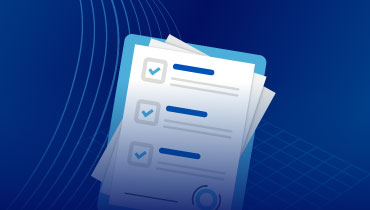What is cloud security compliance?
Did you know that about 60% of the world’s corporate data is stored in the cloud? This figure is expected to keep rising as more companies adopt the cloud. Why is there a massive rise in the adoption of cloud computing?
Cloud solutions offer great speed, agility, and flexibility. Organizations use emerging cloud technologies to deliver cutting-edge products and services. That said, deploying your workload to the cloud has many inherent security risks.
Cloud infrastructures have an increased attack surface. And companies significantly rely on cloud providers to secure their sensitive data and applications. The cloud is complex with many access points that malicious actors can exploit. In other words, data stored in the cloud is more exposed to cyber-attacks
To reinforce security and mitigate risks, there are cloud compliance frameworks you are required to comply with. There are many regulatory requirements or standards, including cloud provider compliance requirements and industry-specific compliance standards (like Payment Card Industry Data Security Standard [PCI DSS]).
In this article, you’ll learn everything you need to know about cloud compliance, including compliance challenges & tips and how AlgoSec can help you implement compliant data security policies and procedures.
Cloud compliance challenges
Even though cloud technologies give organizations the speed and agility they need to stay ahead of the curve in the fast-changing business world, maintaining compliance with security standards is difficult. Here are some key compliance challenges cloud users are generally dealing with:
-
Visibility into Hybrid Networks
Complying with standards is difficult for organizations that operate hybrid networks due to visibility issues. A hybrid network uses more than one type of connection technology or topology. Managing a range of technologies makes gaining visibility into each network component more difficult.
Meeting compliance requirements demand having good oversight over your network components. This is a big challenge for companies that run on hybrid cloud technologies. Keeping tabs on hybrid environments is time-consuming and requires advanced capabilities due to the complexity of these emerging cloud solutions.
That said, you can solve the visibility issues by integrating a dedicated cloud security management solution to provide complete visibility into your hybrid and multi-cloud network environment.
-
Multi-Cloud Workflows
Most companies use multi-cloud solutions. As the technologies get more complex, so do the workflows. In other words, multi-cloud workflows are sophisticated and multi-faceted. Consequently, it’s harder for compliance officers to ensure the workflows meet relevant requirements.
Dealing with multiple cloud services and having employees accessing data from various devices makes keeping up with information security and cloud governance standards very difficult. The multi-cloud architecture enables the distribution of roles in the company for better flexibility and agility. This impacts compliance as there are many people making decisions and applying changes.
Monitoring who did what and how the changes affect your security posture is a labor-intensive process that can cause non-compliance.
-
Automation
Noncompliance can result from the inability of security officers to use automation solutions to comply with the metrics. Some security laws or regulations require manual monitoring of cloud infrastructures. This approach is time-consuming. Security standards are a lot easier to meet when the compliance check processes can be automated.
-
Data Security
The primary objective of cloud security regulations is to ensure the safety and confidentiality of sensitive data. Today, security data has become more challenging than ever. Deploying workloads and data to the cloud has worsened this problem. Cloud data security is challenging for two reasons: cloud storage or infrastructures have a wide attack surface area and ever-growing cyber threats.
There is an increase in cyber-attacks, and cybercriminals are becoming more sophisticated than before. This trend is expected to worsen, with cyber criminality becoming a lucrative business.
With cloud environments having multiple access points that can be compromised, malicious cyber actors are motivated to attack cloud systems. In addition, having data stored across multiple cloud services make data security a major threat to compliance.
-
Maintaining Compliance Standards
Each time CloudOps or a regulation evolve, organizations find it challenging to follow the rules or comply with new standards.
When a compliance standard is updated, companies invest massive resources to understand the requirements and implement changes accordingly – while ensuring their optimal performance. Depending on the size of an organization, maintaining compliance is mentally tasking, time-consuming, and capital-intensive.
Speak to one of our experts
Cloud compliance tips
Having discussed the major cloud compliance challenges, here are some tips you can leverage to meet relevant requirements and remain compliant.
-
Conduct a Network Security Audit
Data security is a major compliance problem companies are facing. You can significantly improve your network security by instituting a security audit policy. An audit helps you to know the state of your security framework.
It helps you understand how effective or reliable your security solutions are and uncover security policies you need to optimize. In addition, regular inspection enables you to avoid breaches by spotting vulnerabilities promptly.
-
Conduct Periodic Compliance Checks
Companies used to meet compliance standards through a well-regulated annual audit. Today, you are required to demonstrate to customers and regulators that your company is constantly compliant. As a result, you need to run periodic compliance check-ups in real-time. This doesn’t only help you avoid fines & penalties but also enables you to avoid security breaches and loss of data.
-
Consider Micro-Segmentation
This cloud security approach involves dividing cloud environments or data centers into unique segments and applying custom access and security controls to each segment. Micro-segmentation boosts security and gives better control over data and risk management.
With security policies applied separately to each segment, a company-wide breach is unlikely. And when something goes wrong, restoring compliance is easier since security controls are not lumped together.
In other words, micro-segmentation minimizes attack surface. It creates many “small networks” with independent security controls. So, when a malicious actor breaches your firewall, they don’t have access to your entire data centers and cloud environments – reducing the scope of damage of a single breach.
In addition, micro-segmentation prevents east-west movement in your network. This security posture helps prevent east-west attacks by bringing granular segmentation down to the virtual machine level
-
Periodically Audit Your Firewall Rules
Firewall rules define what traffic your firewall allows and what is rejected. As the threat landscape keeps changing, there is a need to audit and update your firewall rules. Cybercriminals are constantly evolving and finding new ways to compromise networks.
To be a thousand steps ahead of them, implement a security policy that mandates periodic auditing of your firewall rules.
Cloud security FAQs
If you are looking to learn more about cloud solutions and security compliance, this section covers some common questions you might have:
-
What are the Main Security Benefits of a Hybrid Cloud Solution?
A hybrid cloud solution enhances data security and helps you comply with regulations. It improves data security by giving organizations better flexibility with data storage options.
With the hybrid model, you can store the most sensitive data in on-premise data centers and use public cloud services like Google Cloud for less sensitive data. On-premise data centers are more difficult to compromise, while data stored in a public cloud is easy to access and process by your team members.
If your company operates in places with data localization laws, you don’t need to build data centers in each country. Customer data collected locally can be stored in public cloud infrastructures that comply with the data localization requirements.
-
What are Some Hybrid Cloud Security Best Practices?
Hybrid cloud security best practices include automation & visibility, regular audits, access control, consistent data encryption, secure endpoints, and secure backups.
-
What About Public Cloud Security? How Do You Ensure AWS and Azure Compliance
To ensure compliance, employ Amazon Web Services (AWS) and Microsoft Azure cloud engineers to help you configure and set up your cloud network. Public clouds are super complex. Not having experts configure and manage your cloud assets can lead to misconfigurations, waste of resources, and non-compliance.
In addition to hiring experienced public cloud engineers, you should have a dedicated compliance specialist. The person will be responsible for monitoring compliance status to ensure your company is never found wanting. And when things go wrong, your compliance officer will be there to proffer solutions.
-
What are the Top Cybersecurity Threats in the Public Cloud?
Top cybersecurity threats in the public cloud include unauthorized access to data, distributed denial of services (DDoS) attacks, cloud misconfiguration, data leaks & data breaches, insecure API, insecure third-party resources, and system vulnerabilities.
-
What are Some Common Regulatory Compliance Requirements?
There are many global regulatory frameworks that set requirements organizations must meet when collecting and managing customer data. These regulations include HIPAA, PCI DSS, GDPR, ISO/IEC 27001, NIST, NERC, and Sarbanes-Oxley (SOX).
Some of these regulatory frameworks are industry specific, while some apply to every company that operates where they are effective. For instance, HIPAA applies to the healthcare industry, and the General Data Protection Regulation (GDPR) applies to any organization that processes the personal data of EU citizens.
Not all compliance standards apply to both on-premises data centers and cloud environments. Some regulations relate specifically to your cloud controls.
-
What is the Shared Responsibility Model?
The shared responsibility model stipulates that cloud service providers and their customers are responsible for ensuring the security of cloud networks. While cloud providers maintain basic compliance standards and provide security tools, your organization has a part to play in protecting its cloud networks.
Use the security capabilities and tools offered by the cloud providers and third-party cloud security services to ensure your company has full visibility and management of its SaaS, PaaS, or IaaS assets.
-
What are the Main Types of Network Security Policies?
A network security policy defines a company’s security framework. It provides guidelines for computer network access, determines policy enforcement, and lays out the architecture of your organization’s network security environment.
Network security policies determine how security best practices are implemented throughout the network estate.
That being said, the main types of security policies include access management, email security, log management, BYOD, Password, patch management, server security, systems monitoring & auditing, vulnerability assessment, firewall management, and cloud configuration policies.
How does AlgoSec help with cloud compliance?
AlgoSec is a leader in cloud security management. It helps the world’s largest and most complex organizations to gain visibility, reduce risk, and maintain security & compliance across hybrid networks. Here is how AlgoSec can help your company with cloud compliance:
-
End-to-End Network Visibility
Get visibility of the underlying security policies implemented on firewalls and other security devices across your cloud-only or hybrid network, including multiple cloud vendors. Have a detailed insight into your network’s traffic flows and the state of your applications and data in real-time.
Complete end-to-end visibility gives you the insights you need to implement suitable security policies to ensure compliance.
-
Ensure Continuous Compliance
Major regulations, like PCI DSS, ISO 27001, HIPAA, SOX, NERC, and GDPR require you to conduct an audit to show compliance. This is time-consuming and labor-intensive, especially for organizations that run super complex cloud systems. Simplify and reduce audit preparation efforts and costs with out-of-the-box audit reports.
-
Multi-Cloud Management
You don’t have to spend more resources implementing multiple management consoles. With AlgoSec, you can handle multiple cloud management portals using a single solution.
-
Secure Change Management
Implement changes and configurations securely with zero-touch provisioning (ZTP). Manage security policies across single-cloud, multi-cloud, and hybrid environments via automation with zero-touch. Deploy changes automatically and eliminate most of the error-prone manual labor.
-
Cloud Security Training
AlgoSec offers comprehensive training for cloud security professionals. Cloud technologies are complex. And they keep evolving. Keeping tabs on new technologies and best practices requires regular cloud security training. Optimal training of your security personnel helps you stay compliant and proactively avert a crisis.
-
Hybrid Cloud Environment Management
Automatically migrates application connectivity and provides a unified security policy through easy-to-use workflows, risk assessment, and security policy management.



